
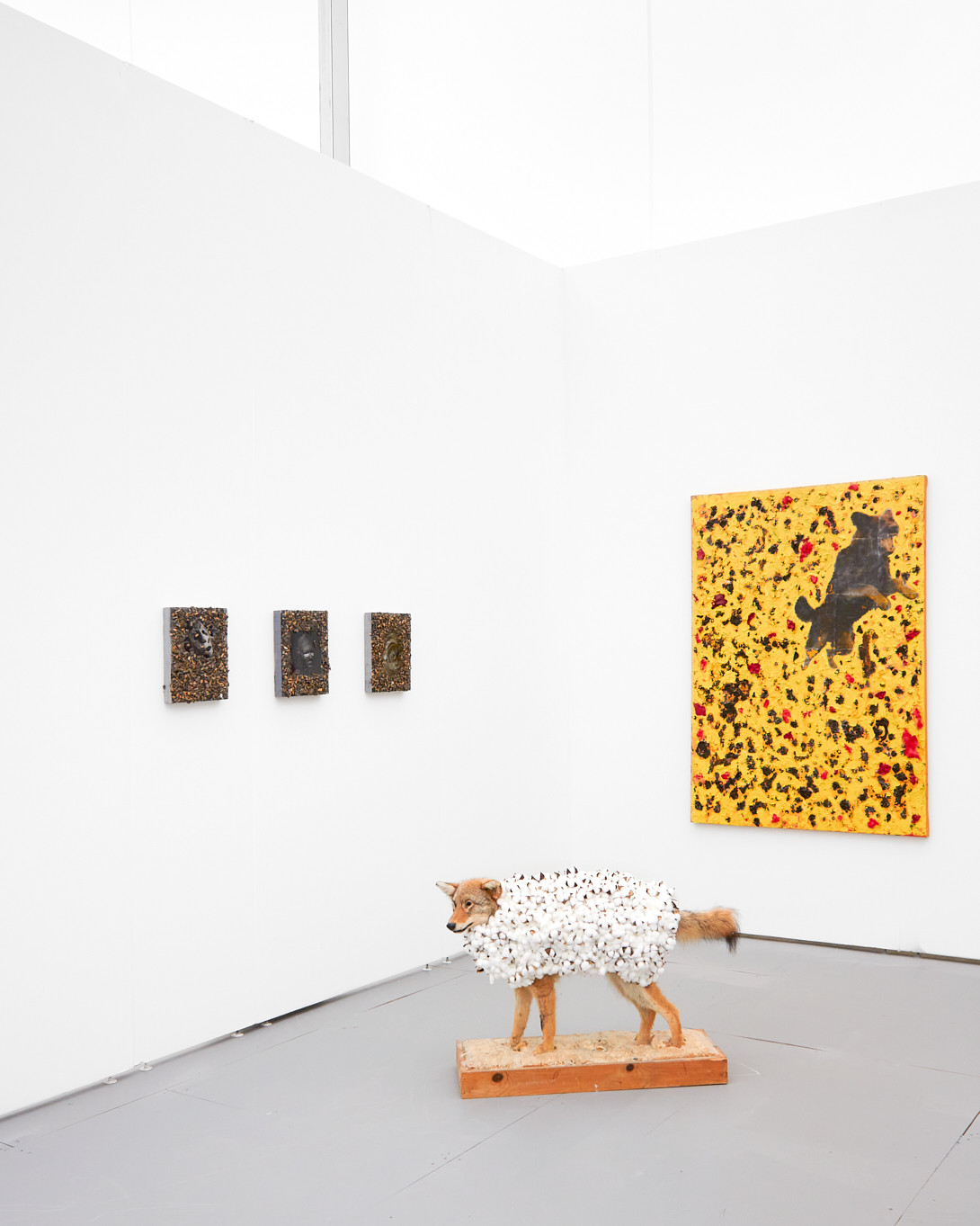
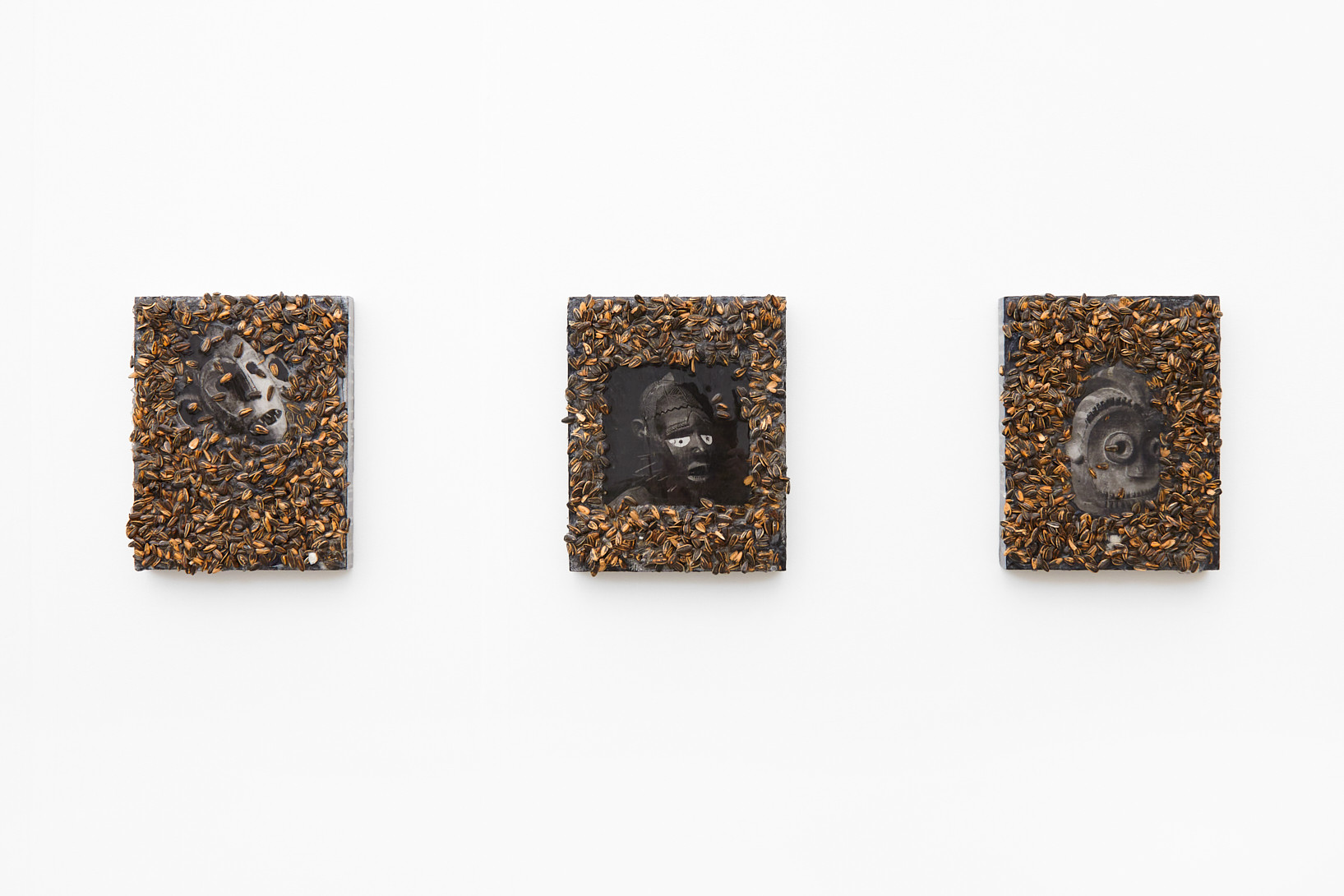
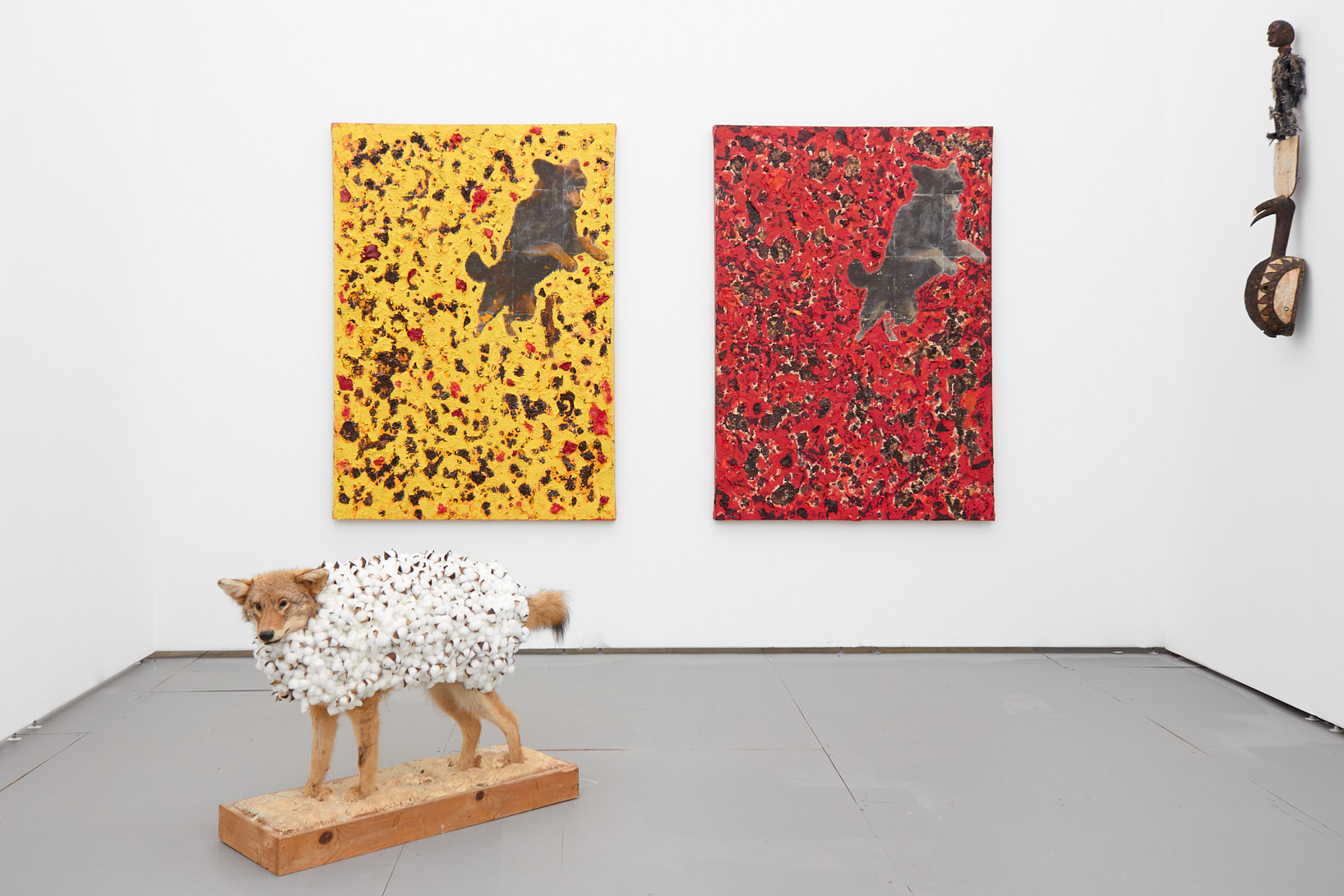
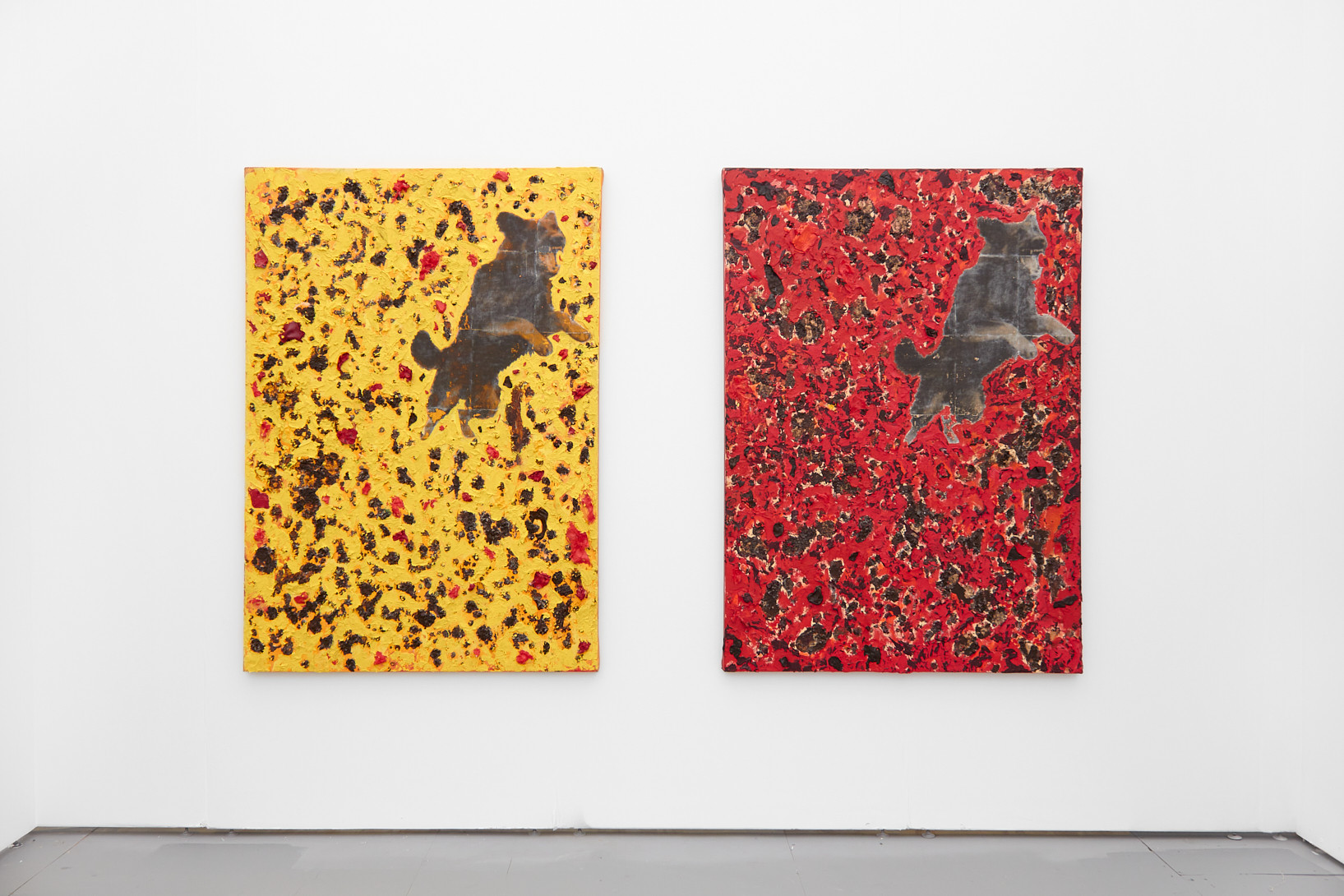
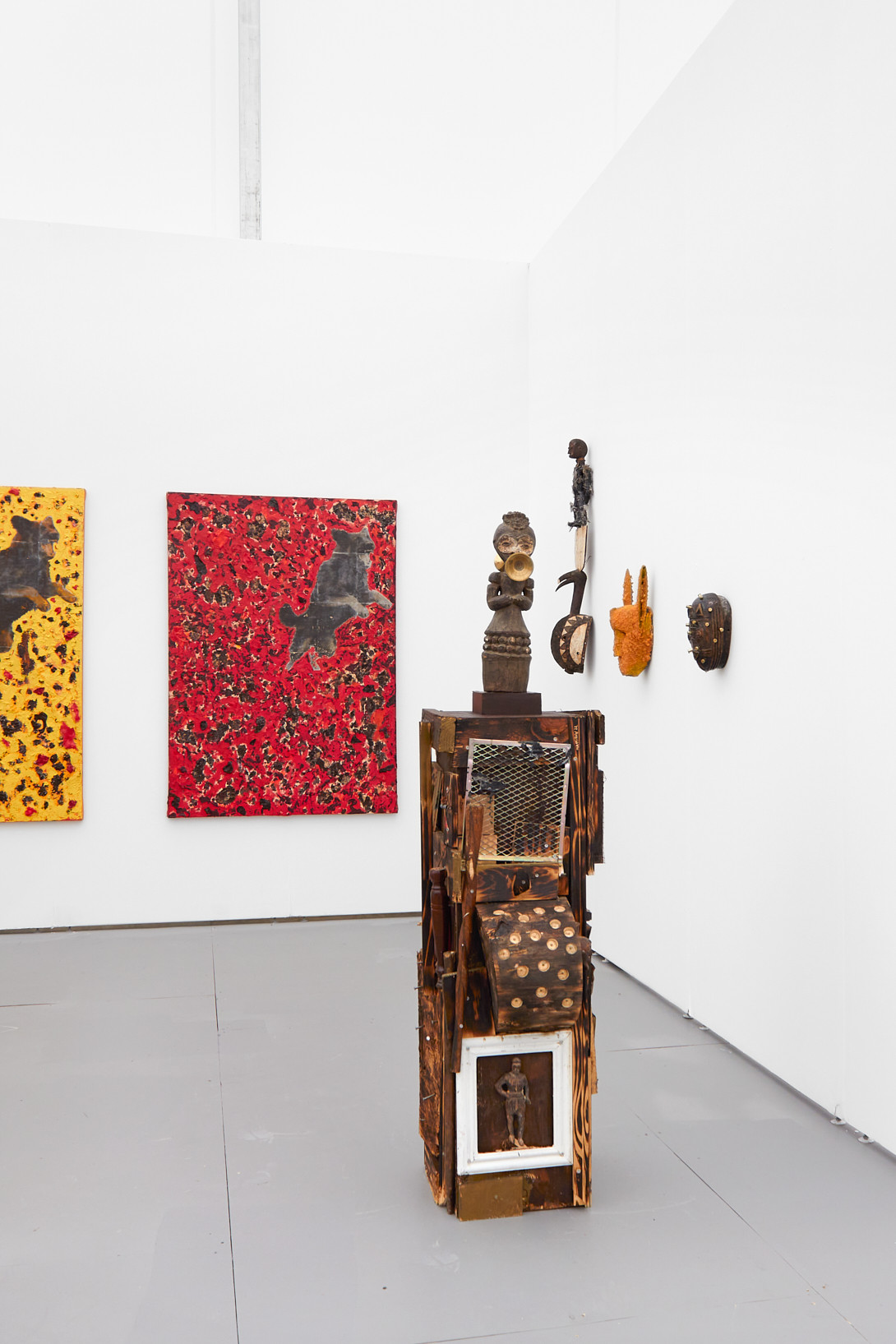
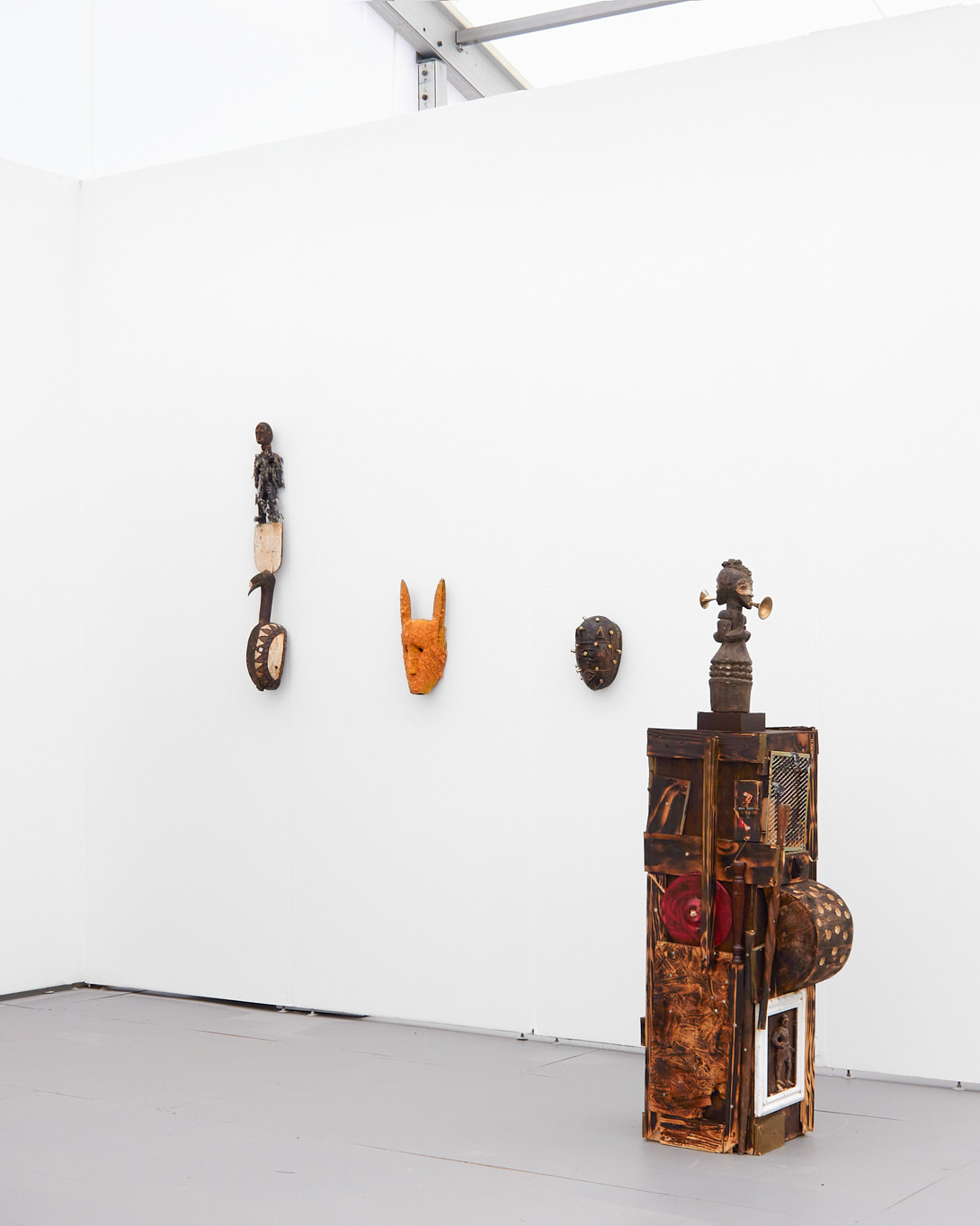

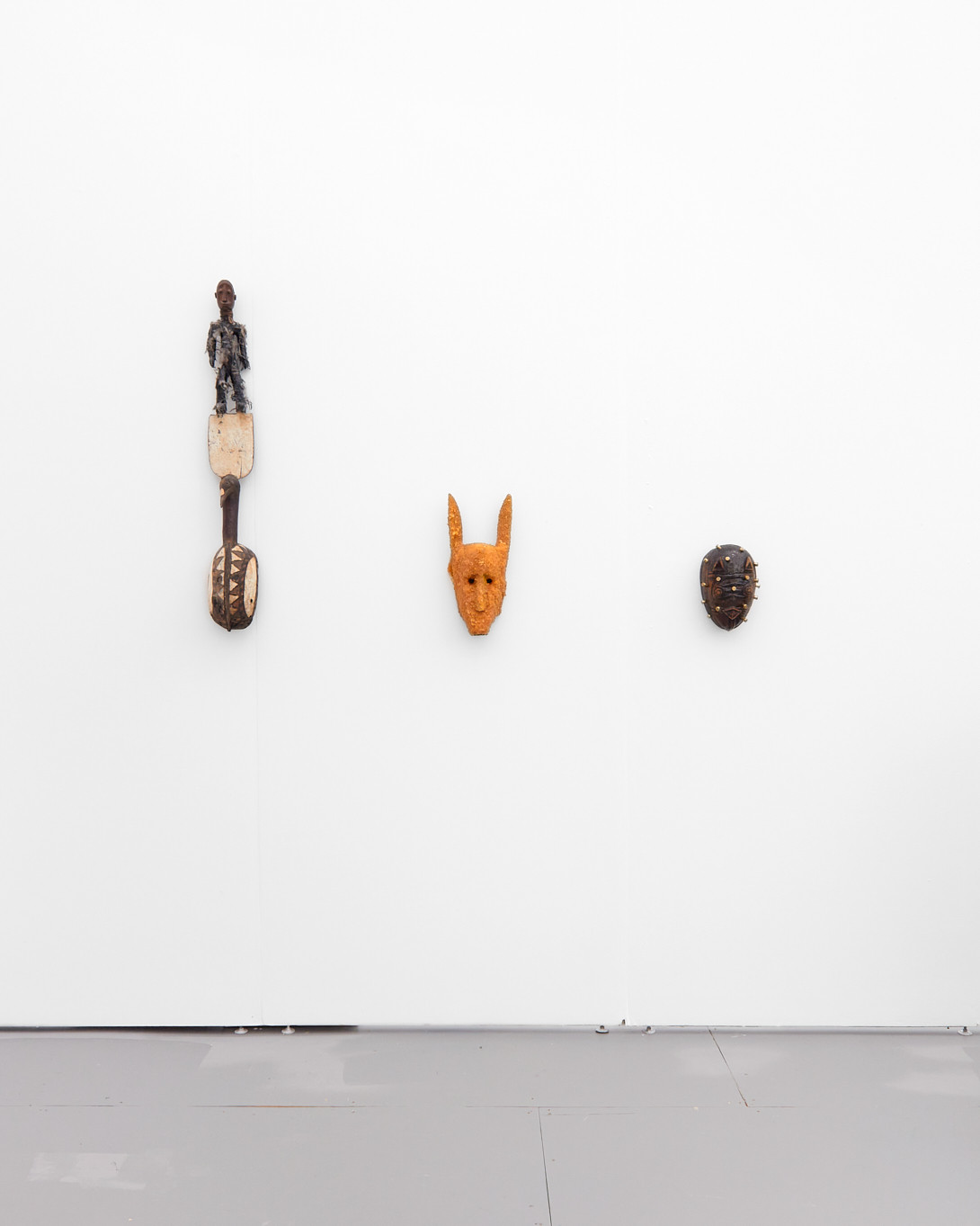
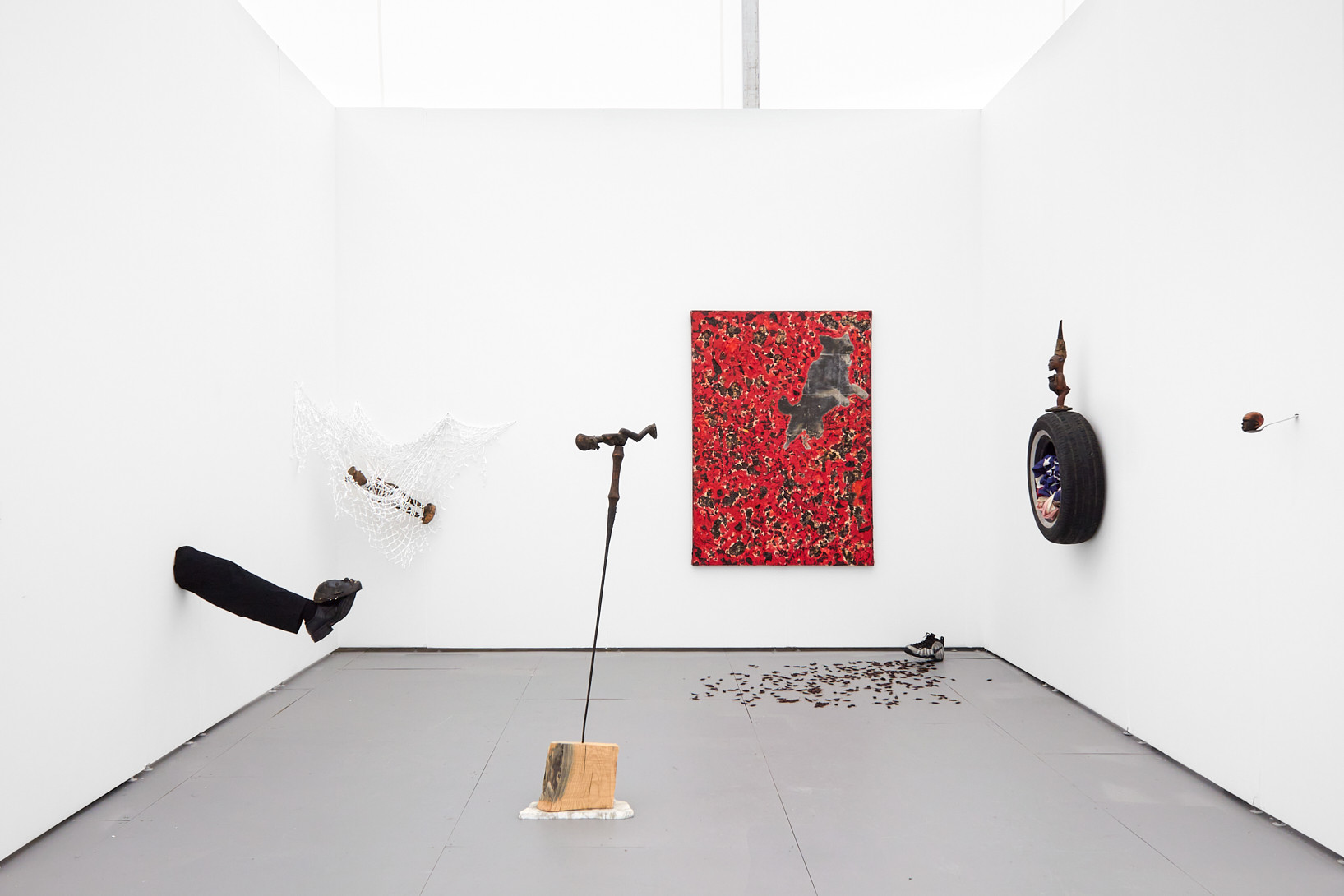
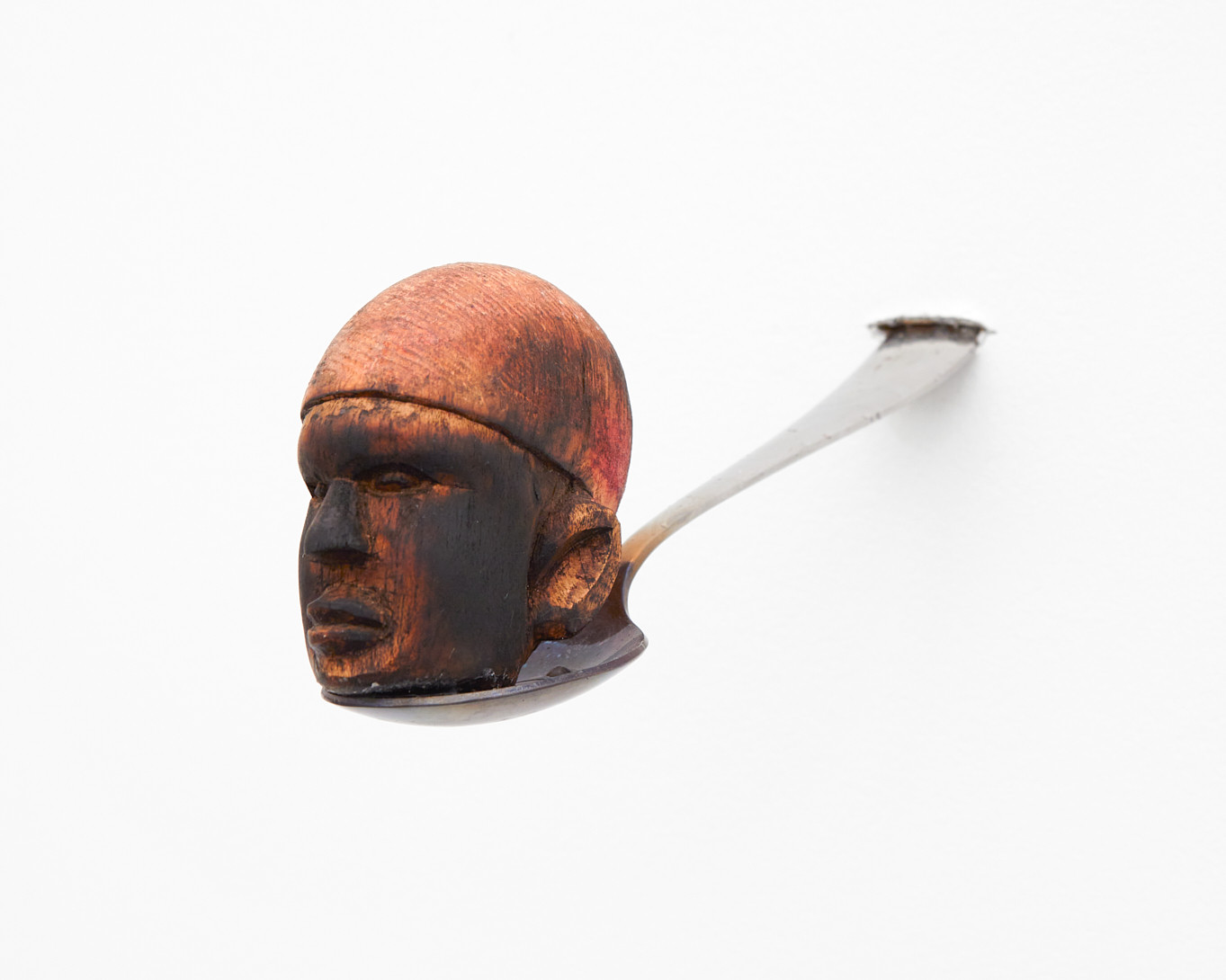
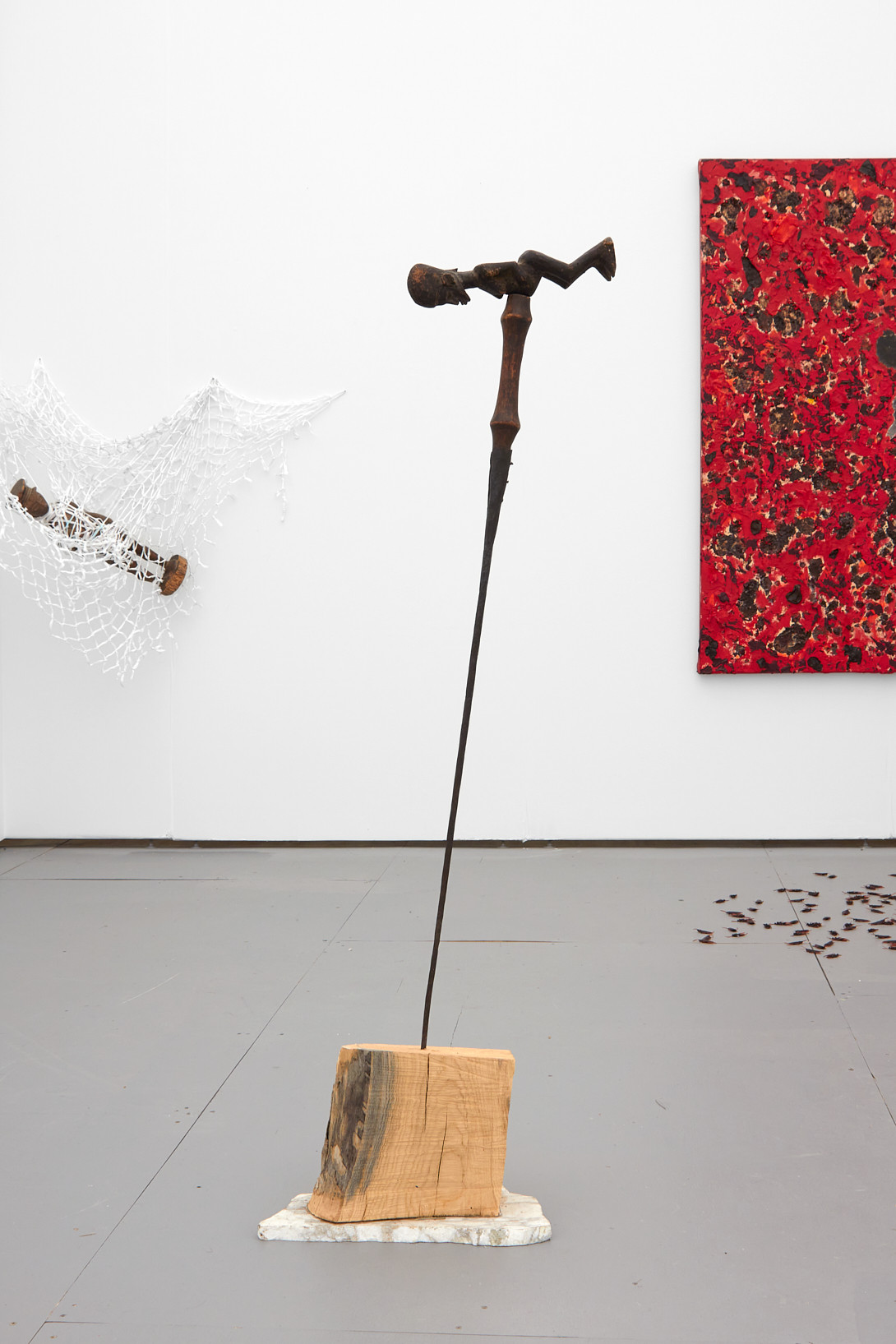
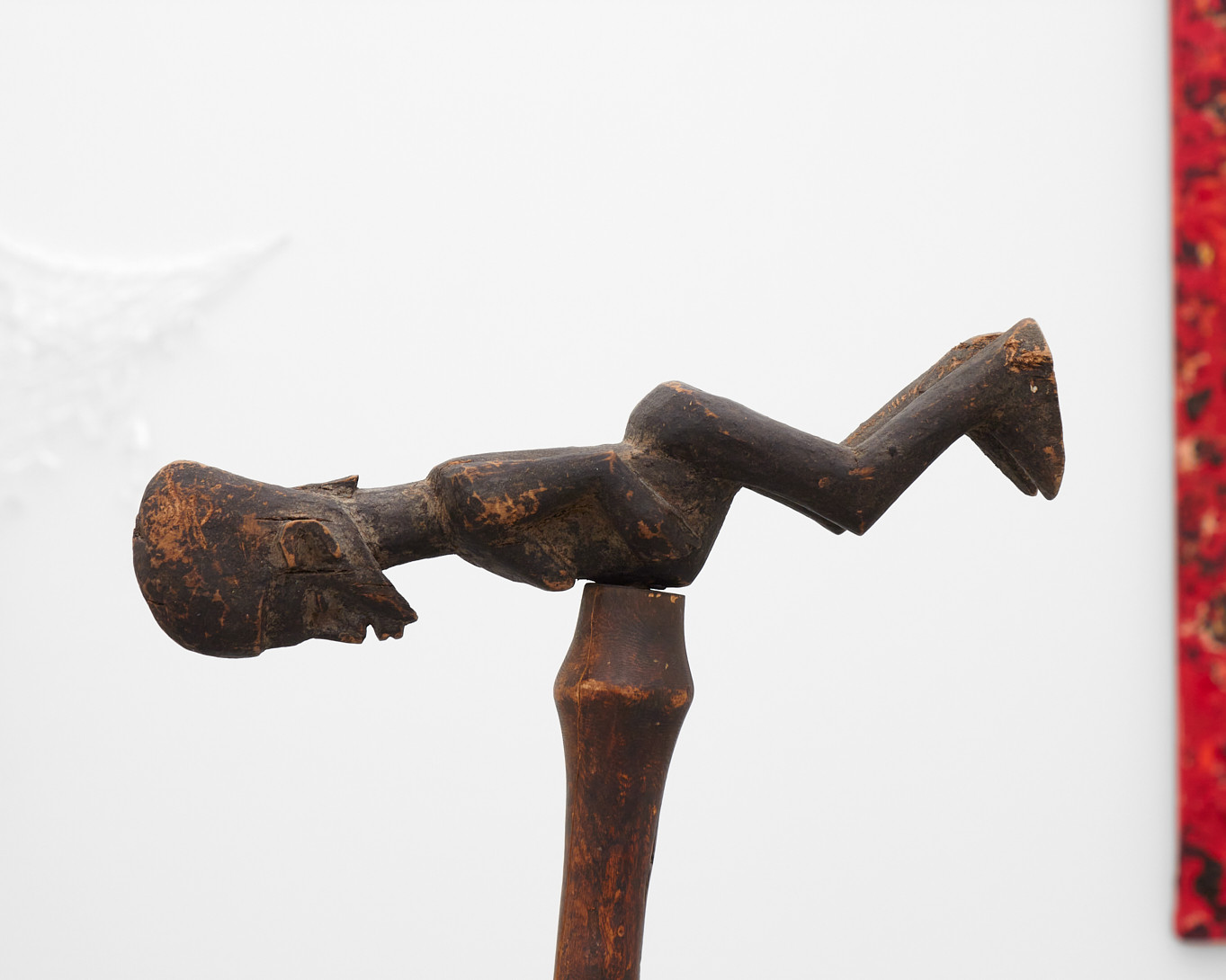


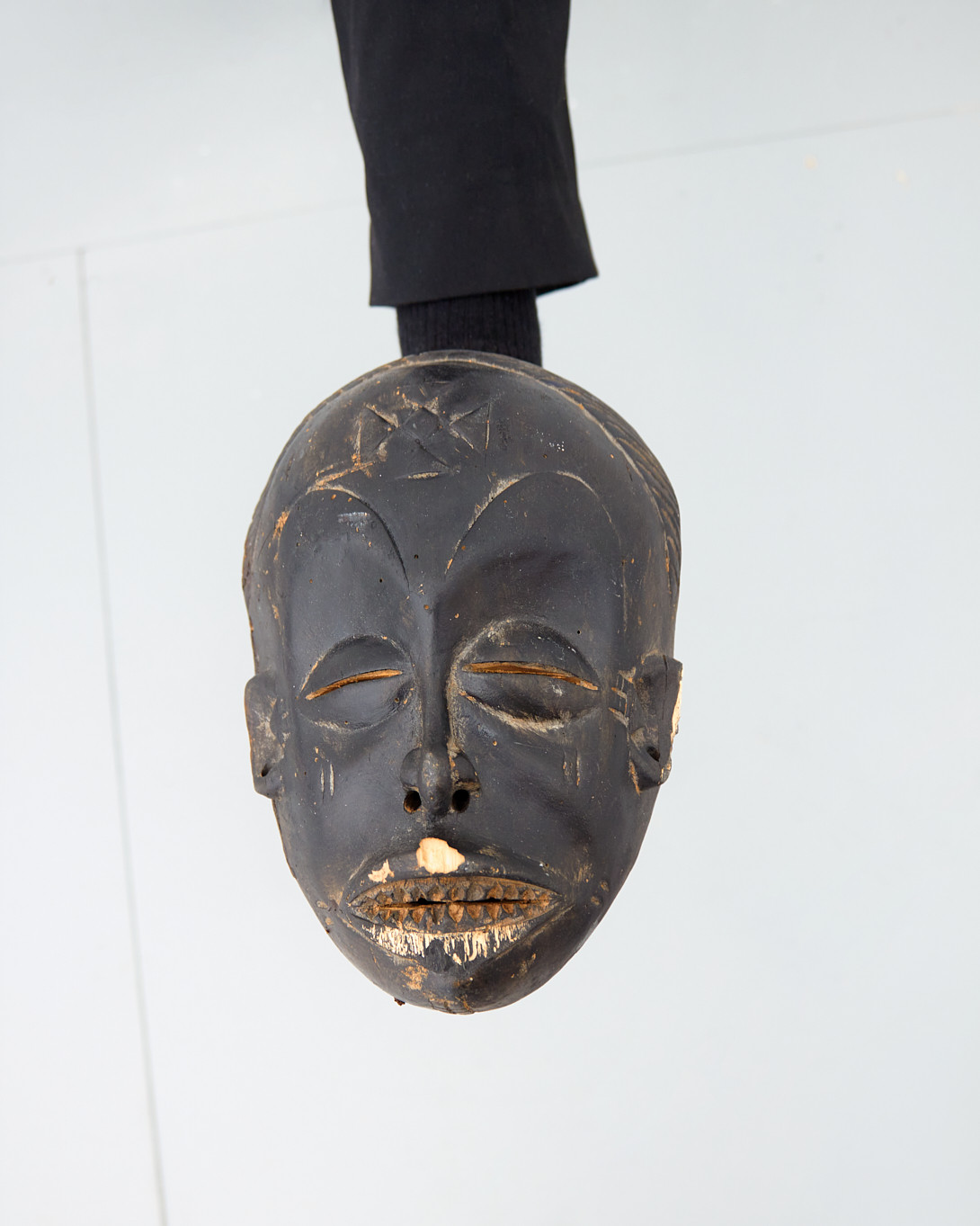
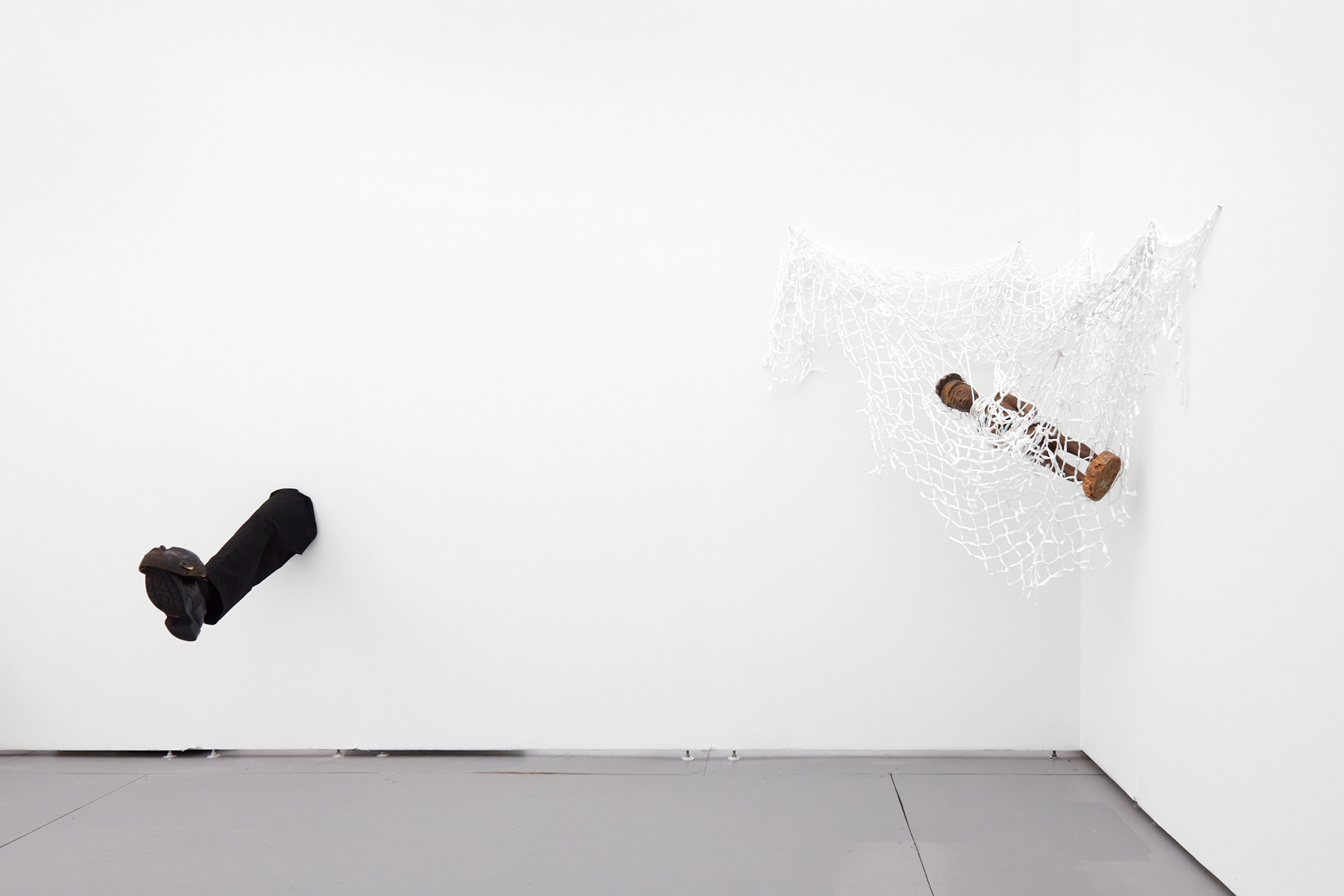

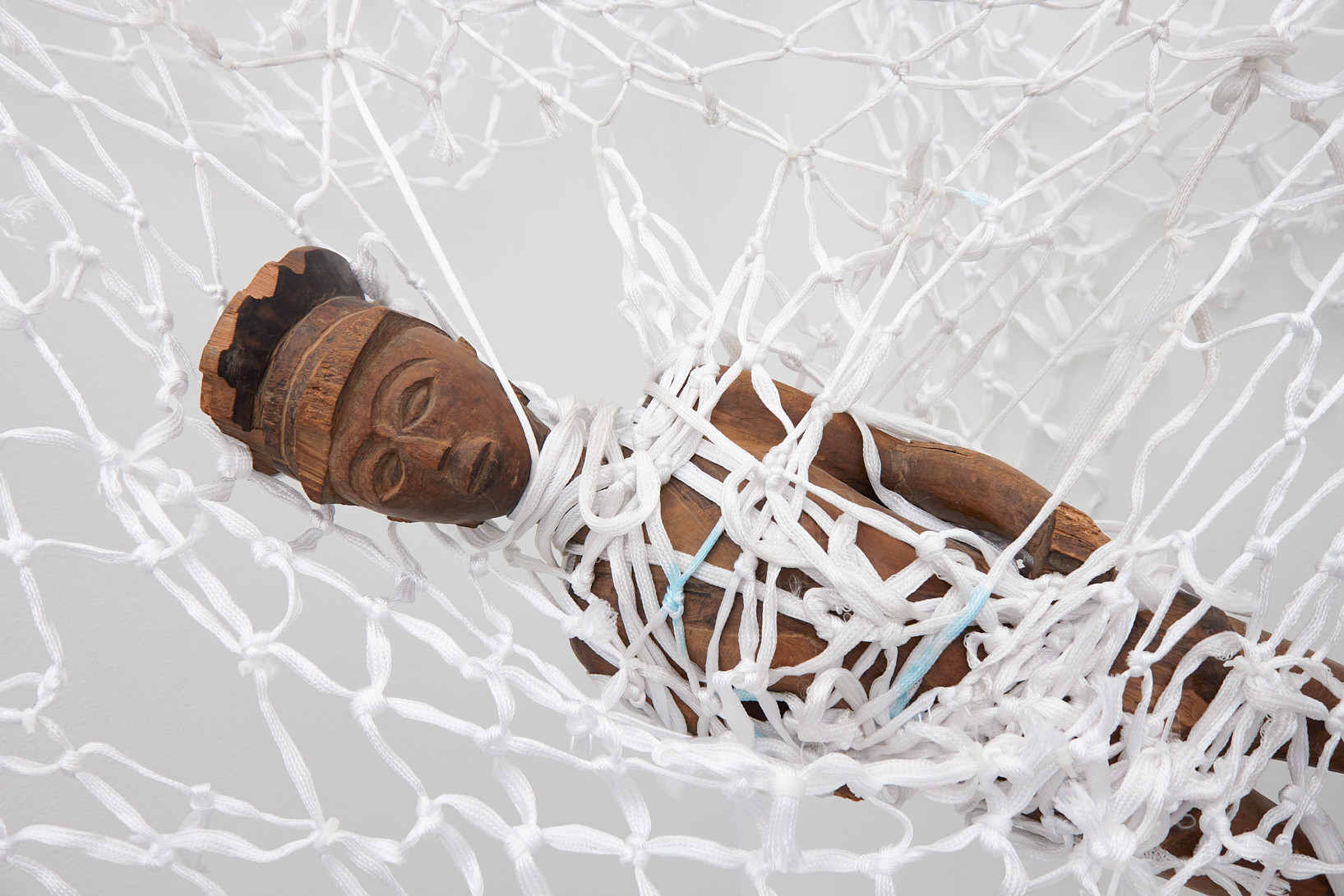
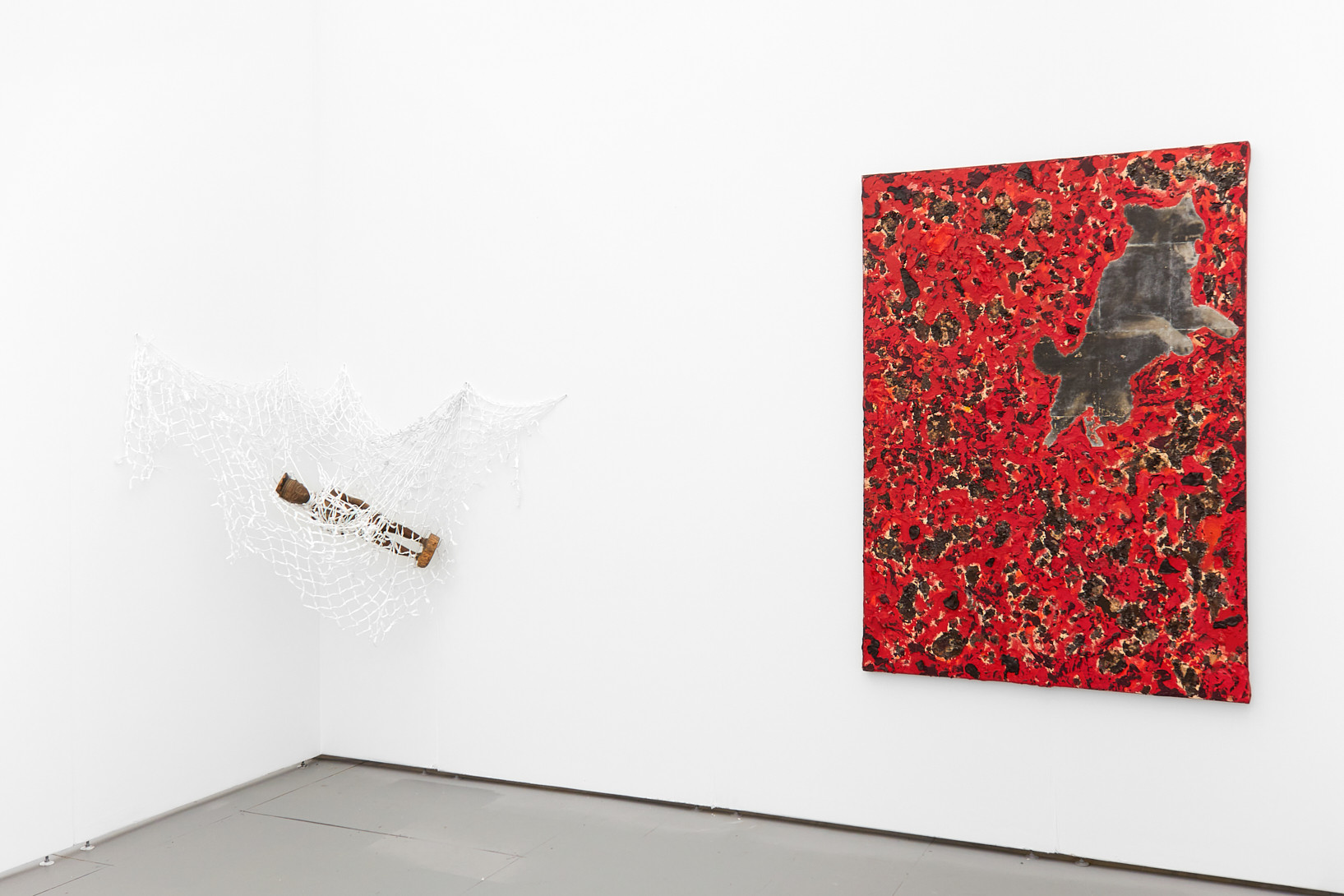


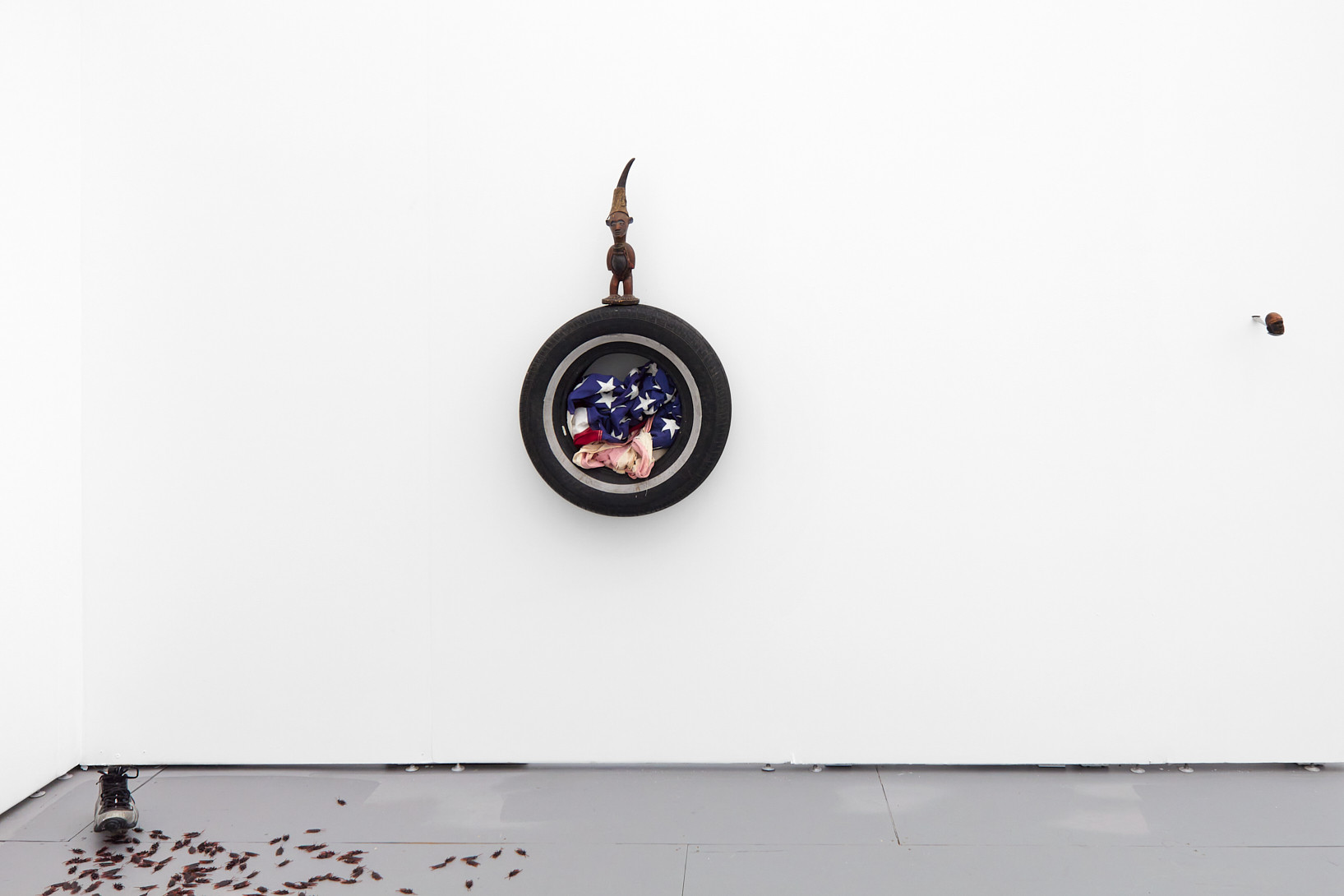
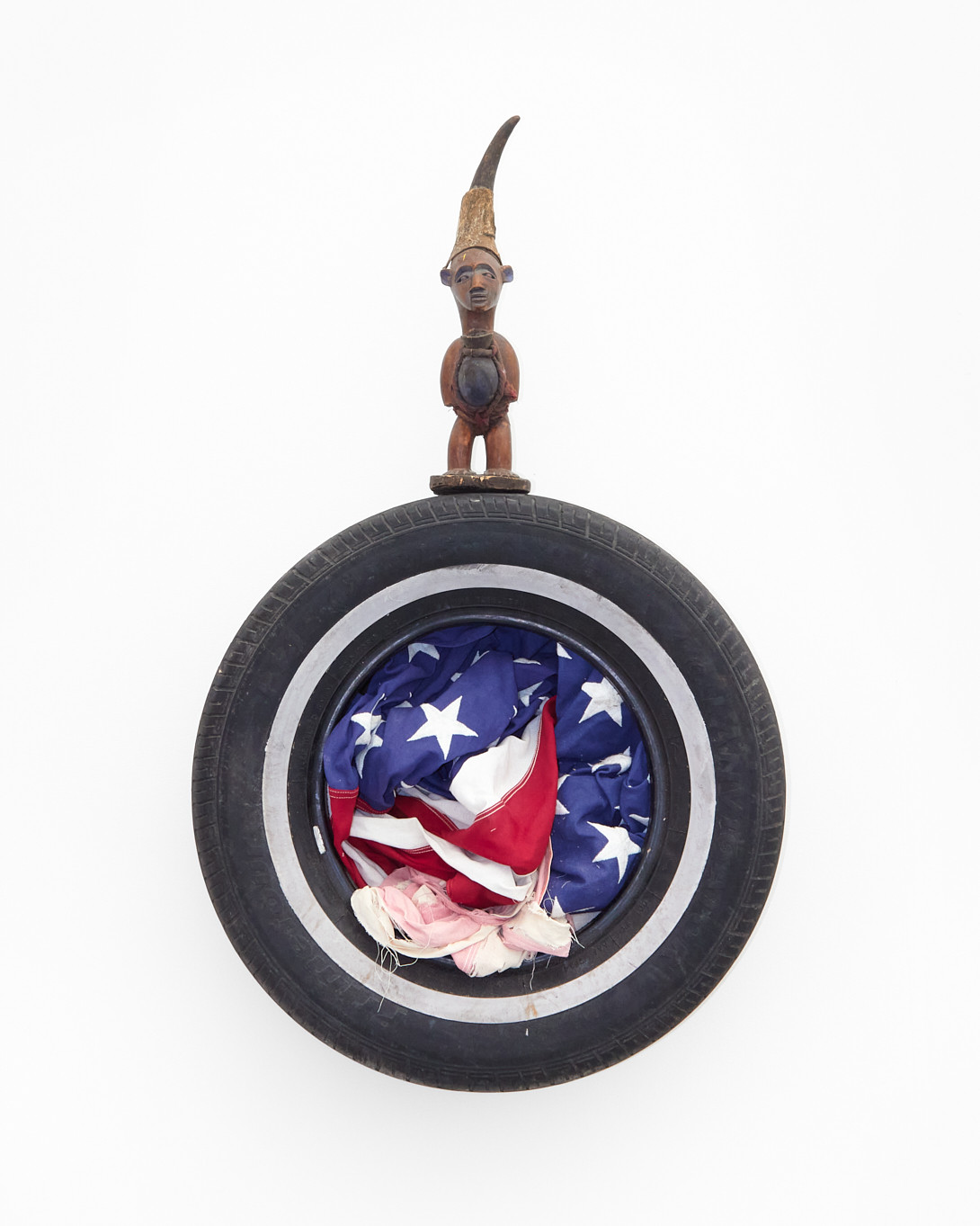
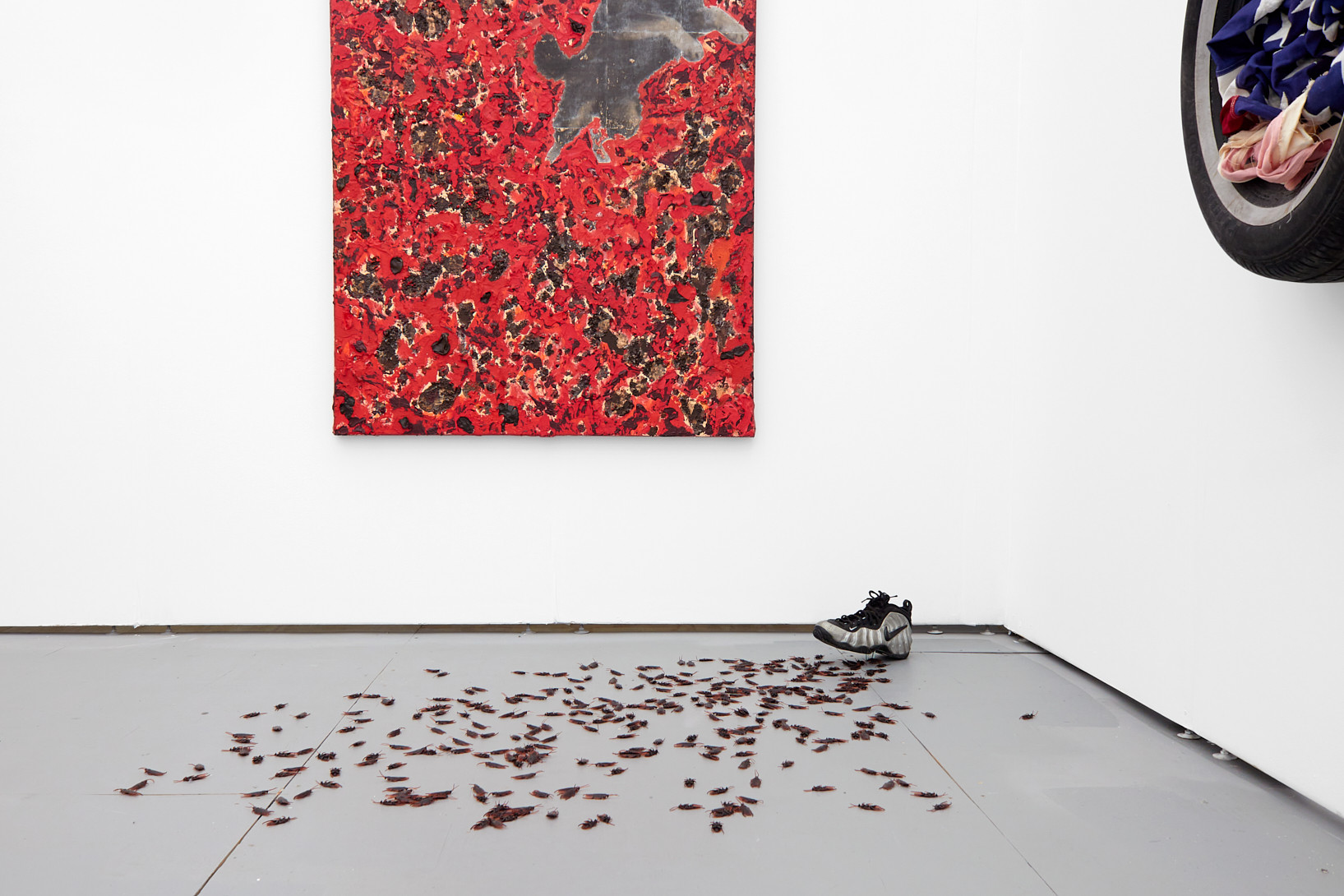

© Credits photo: cadet capela


























For his presentation at UNTITLED, New York-based conceptual artist Emmanuel Massillon treats the booth like a turntable. Here, the artist abandons the traditional model of showing a single suite of artworks for the duration of the fair and, instead, presents two unique arrangements, which will be on view during the first and second half of UNTITLED, respectively. In tandem, they can be metaphorically understood as the A-side and B-Side of a record, where the former is usually comprised of hit records and the latter of lesser known tracks. Similarly here, A-SIDE is made up of works from several ongoing series’ such as Dog Food Paintings, Sunflower Seed Paintings and Towers, whereas B-SIDE is comprised of new, experimental compositions.
As the title A-SIDE/B-SIDE suggests, Massillon’s process is heavily influenced by music, specifically the lyrics and compositional logics of contemporary rap and hip-hop. The artist looks to tracks by musicians like Lil Baby or G Herbo as one may look to a poet’s words for renewed wisdom. Further, music not only serves as a site of thematic galvanization for Massillon, but also works its way into his process in that the artist regards himself as a “master sampler.” Just as a producer can lift the rhythm, melody or lyrics from a pre-existing song and bend it to serve as a foundation for a new track, Massillon “samples” and refashions elements from each of his influences, which in addition to music include his experiences growing up in Washington D.C.’s inner-city, and the aesthetic legacy of the Black-American South.
Where the gathering of artistic content is generally referred to as “inspiration,” Massillon’s unique, self-reflexive understanding of his process as one of “sampling” positions his practice as a series of citations, wherein he pays homage to the litany of periods, places and people that have shaped him. In so doing, he acknowledges the content of his life as well as the context from which he emerges as worthy sites of study and as microcosms that reflect a broader continuum, thereby tethering himself to lineages that are at once political, art-historical, and deeply personal.
A/SIDE illuminates Massillon’s keen use of materials to draw attention to how we measure political progress. The Dog Food paintings sample the artist Bill Traylor, who maintained an active artistic practice both during and after his enslavement. In addition to the fact that Traylor frequently painted dogs, he is relevant to Massillon because of how relentlessly he strived to express himself within impossible conditions. Additionally, as in the case of his prior Dog Food paintings, those featured here speak to the U.S. government’s instrumentalization of canines to terrorize Civil Rights protestors in the 1960’s. The canvases assume their blistered texture through the artist’s application of literal dog food, which is also a colloquial term for heroin. In combining images of dogs with the dog food itself, these works nod to how the opioid epidemic of the 1980’s targeted Black communities or, in other words, “threw them to the dogs,” and, in turn, severely compromised access to the rights purportedly won in the two preceding decades.
Similarly, his Sunflower Seed Paintings point in multiple directions at once. The seeds themselves are layered over reproduced images of African masks and work to index the prevalence of food deserts in the inner-city as well as the burial of African heritage. Here, he visualizes how Black communities have been cut off from at least two kinds of nourishment that are fundamental to human development: Healthy food and knowledge of one’s origins. Likewise, Religious Relics, the artist’s newest tower work, speaks to how Christianity has operated as a tool to psychologically subjugate Black Americans. For this work, Massillon, who learned to carve wood from his Great Grandfather, created a two-headed figure to sit atop the tower and evoke how a force that is regarded by some as benevolent can also be furthered to brutally destructive ends.
B-SIDE, on the other hand, demonstrates how samples operate in Massillon’s titles, which are usually siphoned from colloquial phrases that we might understand as the “lyrics” of our collective consciousness. See, for instance Silver Spoon, which depicts a stern-faced wooden head resting within a charred utensil. The title refers to the bourgeoisie, who are “fed from a silver spoon,” whereas the material form itself speaks to the way heroin is heated to prepare it for consumption. Here, Massillon speaks again to the opioid epidemic’s grip on the inner-city and, more broadly, to how the economic fortitude of the American upper-class has long occurred at the expense of Black economic freedom.
Wolf in Sheep’s Clothing, a taxidermy coyote covered in a layer of raw cotton, is titled after a phrase used to denote pernicious entities that pass themselves off as innocuous. While the cotton may be soft to the touch, it also carries the affective residue of being the backbone of the U.S. economy throughout America’s participation in the transatlantic slave trade. In covering the coyote with cotton, the sculpture becomes symbolic of our nation’s reluctance to sincerely grapple with its past.
For several other works shown in B-SIDE, the conceptual narratives that propel them are sampled directly from Massillon’s upbringing. For example, Nothing But Net references the ubiquitous belief that excelling on the court would serve as a clean way off the block. See also Step or Get Stepped On, which nods to the notion that one must assert their dominance or risk being dominated by another, which inhibits possibilities for the establishment of mututal care networks in Black communities.
Ultimately, the artist’s vision for the booth, as well as his practice more broadly, falls squarely within a lineage of what theorist Saidiya Hartman has named “waywardness.” Hartman writes: “Waywardness is a practice of possibility… It obeys no rules and abides no authorities… It is an ongoing exploration of what might be; it is an improvisation with the terms of social existence, when the terms have already been dictated.” In short, to be wayward is to embody audacity as an ethic, which few do as exuberantly as Massillon.
Camille Bacon